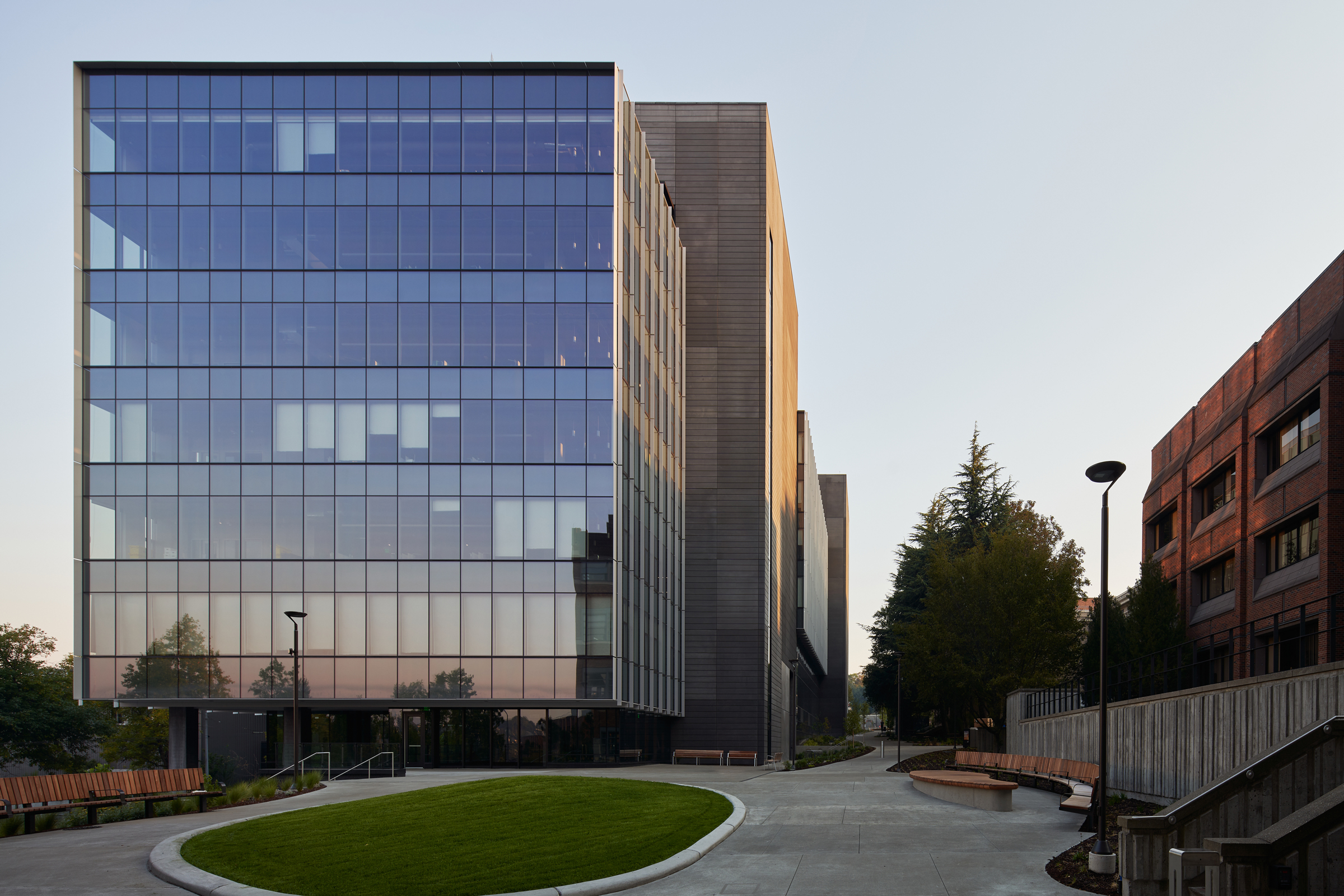Story at a glance:
- Sustainability today often refers to environmental sustainability and includes things like water conservation, biodiversity, and waterway cleanups.
- Social sustainability includes areas like disaster risk management programs and equal access to affordable health care.
As an increasingly used buzzword, “sustainability” today can be a bit tricky to pin down and, as a result, even more challenging to achieve. While some may throw the term around, there are plenty of inspiring examples of sustainability in action, from water and soil conservation efforts to the construction of green buildings and urban agricultural projects.
Here are 25 examples of environmental, social, economic, and cultural sustainability across a range of sectors.
What is Sustainability?
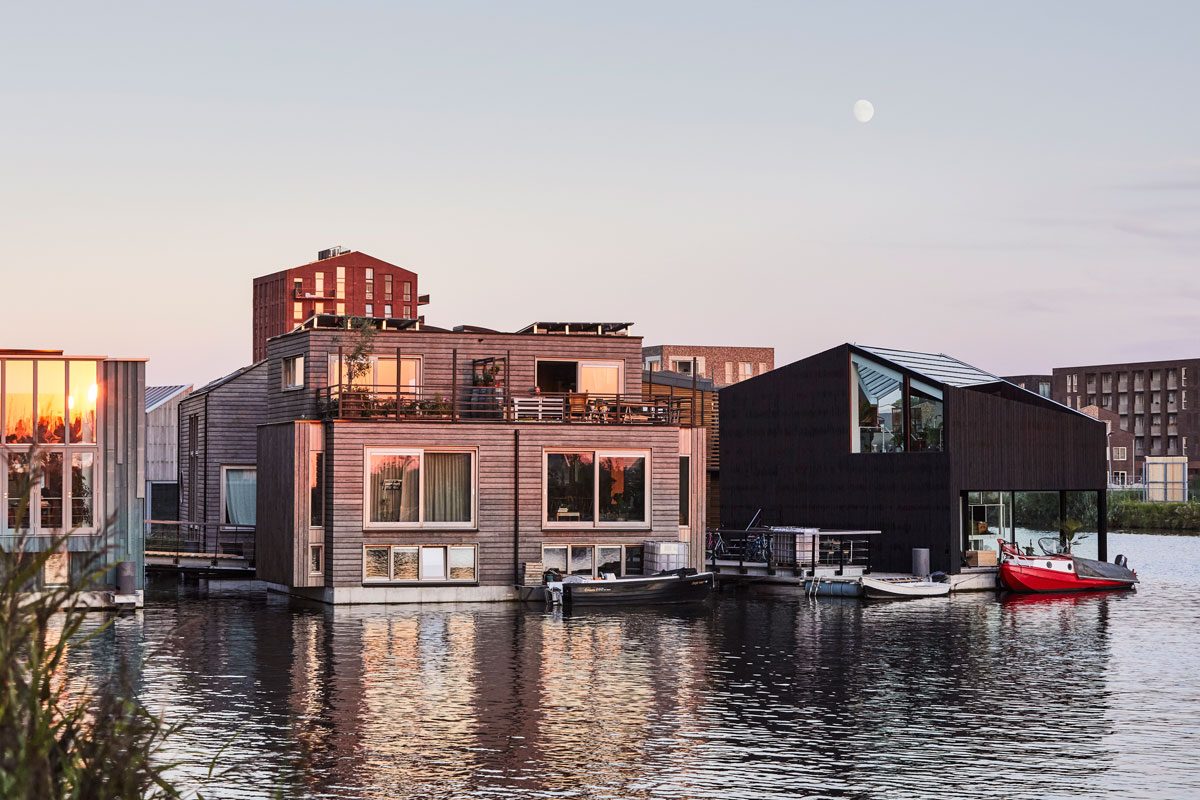
As an urban ecosystem embedded within the city, Schoonschip Amsterdam provides a new model for sustainable living. Photo by Alan Jensen
In the literal sense sustainability simply refers to maintaining something—be it a forest, a business model, or an entire economic system—at a certain rate or level. In the modern age sustainability is often conceptualized as being able to meet the needs of the present without compromising future generations’ ability to meet their own needs.
This conceptualization is in accordance with the United Nations’ definition of sustainability and informs the basis behind the 17 Sustainable Development Goals (SDGs) adopted in 2012 at the UN Conference on Sustainable Development in Rio de Janeiro.
Types of Sustainability
There are four main categories of sustainability that most countries, cities, businesses, and organizations strive for: environmental, social, cultural, and economic.
- Environmental. As the most sought-after form of sustainability, environmental sustainability seeks to avoid depleting the world’s natural resources (renewable or nonrenewable) in an attempt to maintain balance within the ecological community.
- Social. Refers to the processes, systems, institutions, and relationships that actively support the capacity of both current and future generations to create and maintain healthy, livable communities.
- Cultural. The process of maintaining and protecting the world’s cultural heritage, traditions and practices so that they may be learned, experienced, and taught by current and future generations; also known as cultural preservation.
- Economic. Encourages practices that will support long-term economic growth without negatively impacting a community’s environmental, social, and cultural aspects.
Sustainability Examples
As our understanding of humanity’s impact on the natural world evolves and technology advances, the collective idea of sustainability becomes more nuanced.
1. Waste Reduction & The Circular Economy
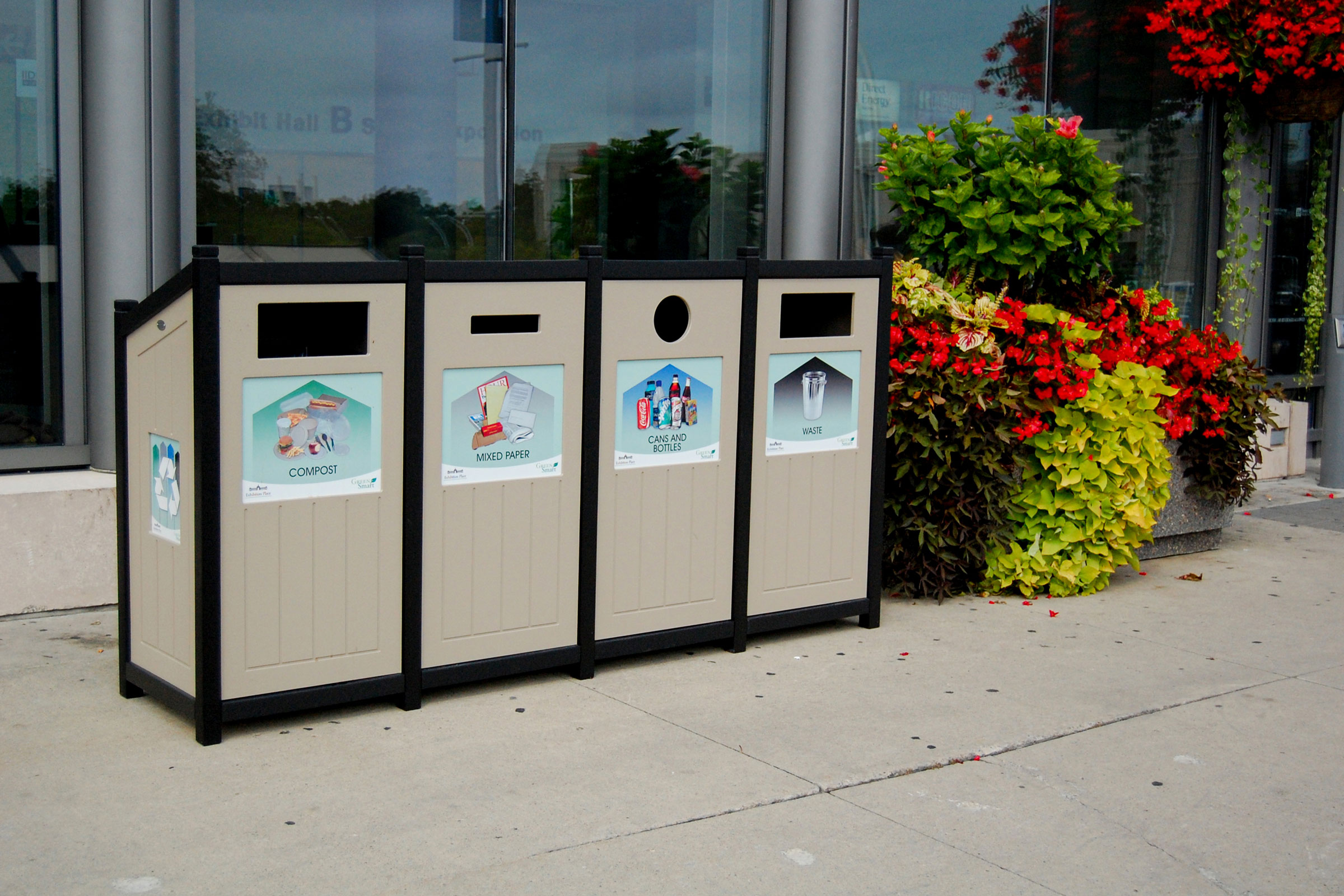
The Enercare Centre implemented CleanRiver’s Excel Slant recycling unit to help achieve an 85% waste diversion rate. Photo courtesy of CleanRiver
Each year the world generates approximately 2.01 billion tons of waste, most of which is not recycled and finds its way into a landfill, is illegally dumped in the ocean, or is left to pollute some other vulnerable ecosystem. This is largely a result of living in societies whose economic systems are based around the “take, make, throw away” philosophy of production and consumption. In recent years, however, some countries, cities, and even companies have begun experimenting with a new system: the circular economy.
The fundamental idea behind the circular economy is that of creating a closed-loop system of production and consumption that emphasizes reusing, refurbishing, repairing, leasing, and recycling existing materials and products for as long as is feasible. By extending the life cycle of every product or material in circulation the circular economy works to reduce pollution and waste production as much as possible.
When implemented at scale, the circular economy reduces the environmental impact of human activities and actively encourages damaged ecosystems to regenerate what has been lost to over-extraction.
2. Carbon Capture & Storage
As the primary factor driving advanced anthropogenic climate change, carbon emissions are the fulcrum upon which the climate crisis rests. Atmospheric carbon must be greatly reduced the world over—and carbon capture technology may play a key role.
Carbon capture and storage (CCS) describes when carbon dioxide emissions are captured as they are produced—typically as the byproduct of certain industrial processes—after which point the carbon is transported to a storage location to be stored deep underground.
Carbon capture technology is capable of capturing and storing over 90% of all carbon dioxide emissions from any given power plant or industrial facility. The first large-scale carbon capture plant is currently being built by Heidelberg Materials in Brevik, Norway and aims to be operational before 2025; once completed, the plant will have the capacity to absorb approximately 400,000 tons of CO2 per year.
3. Decarbonization & Deep Energy Retrofits
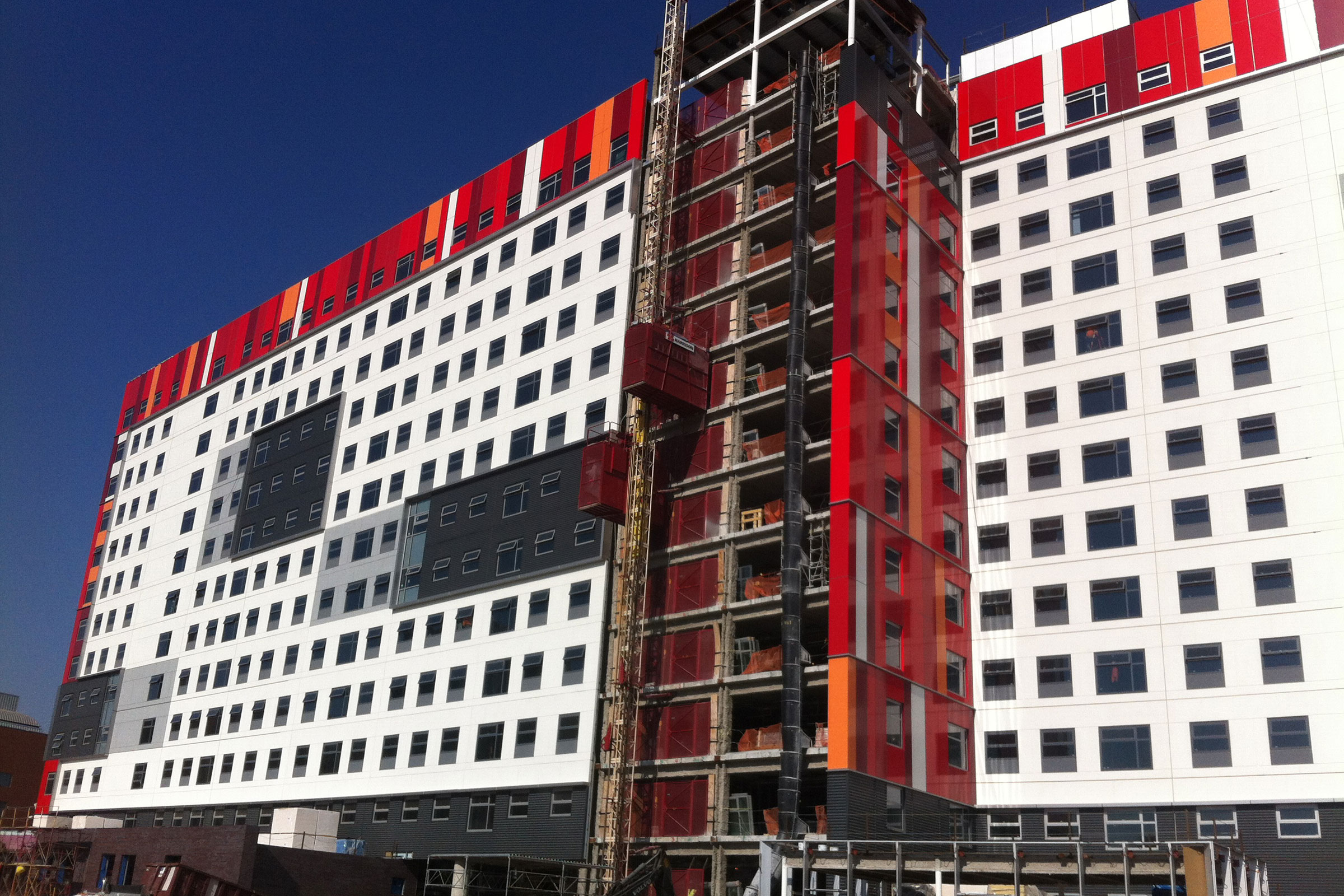
Prefabricated architectural panels are an excellent cladding material for deep energy retrofit projects. Photo courtesy of Tremco CPG Inc.
Even better than capturing and storing carbon dioxide emissions, however, is removing said emissions from the equation entirely, a process known as decarbonization. The strategies used in decarbonization vary depending on what is being decarbonized. In this example we’ll cover how decarbonization is being implemented with regard to the built environment.
Decarbonizing the built environment is typically achieved through the transition to renewable energy sources, the use of energy-saving features and appliances, or a combination of the two. New construction projects are increasingly likely to incorporate these decarbonization strategies from the outset, but there are also plenty of existing buildings that can—and should—be retrofitted to improve their overall energy efficiency.
These deep energy retrofits aim to reduce a building’s on-site energy usage by at least 40% and focus primarily on improving thermal efficiency by upgrading the insulation, installing energy-efficient windows and appliances, sealing air leaks, and replacing existing HVAC systems with low-emission alternatives. The building envelope also plays a crucial role, and prefabricated architectural panels are a tremendous help. Tremco’s prefabricated architectural panels were designed as a cost-effective solution to the envelope-first approach required of deep energy retrofits while eliminating the need to displace tenants in the process.
“The majority of all deep energy retrofit projects are generally tenant-in-place,” David Hutchinson, deep energy retrofit development specialist, told gb&d. “If you’re in construction, you know the labor force, you know the timetables. You can’t be working on apartments, for example, for months and months and months.” He said as retrofit projects have very tight windows to get completed, the only way to do an envelope with tight timeframes and a labor shortage is through prefabrication.
“Decarbonizing the built environment presents a tremendous opportunity and priority due to its significant impacts on climate change, human health, social equity, and economic vitality,” Jenna Cramer, president and CEO of Pittsburgh-based Green Building Alliance, previously told gb&d.
4. Renewable Energy
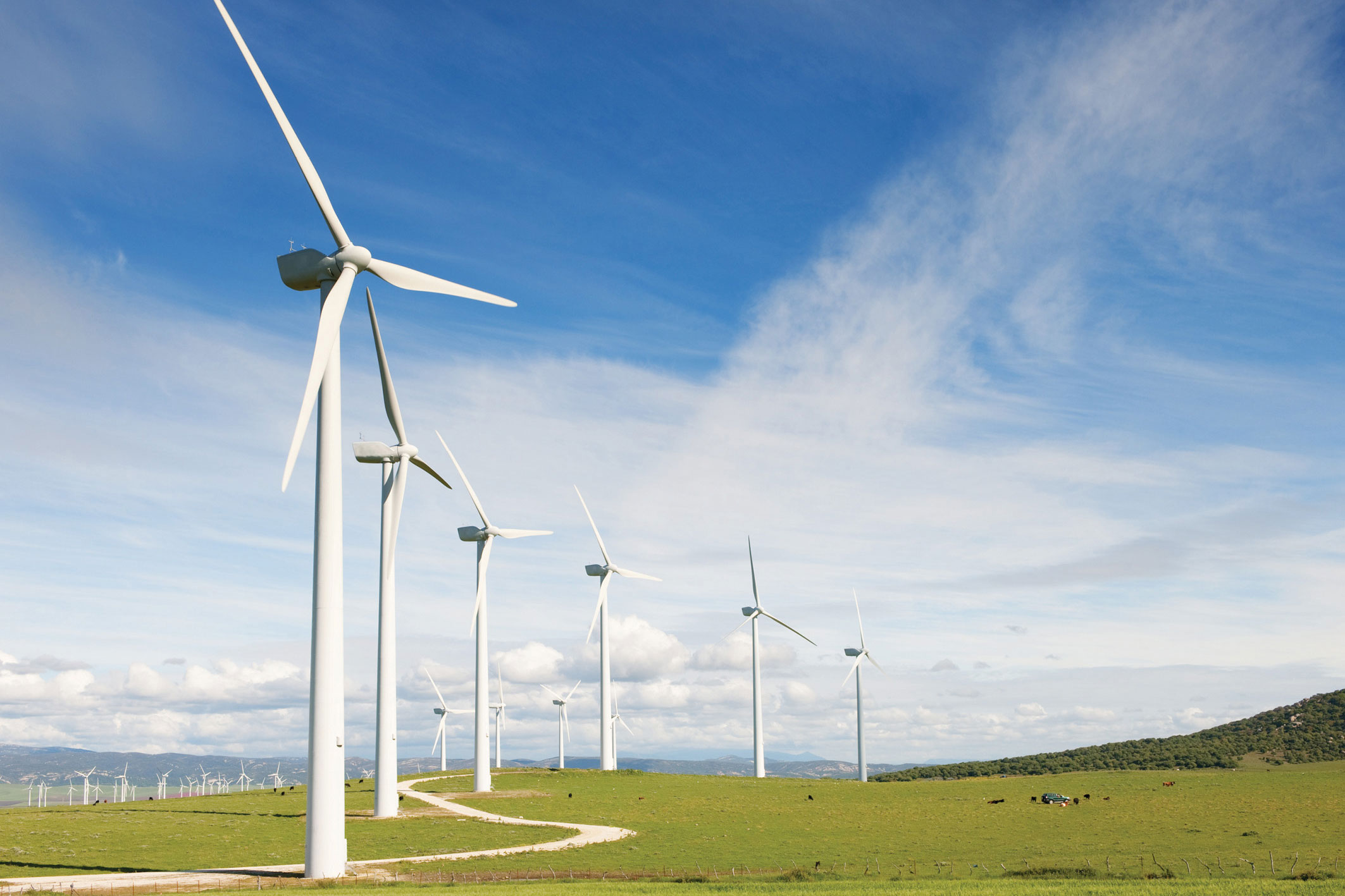
Covestro says clean energy must power the circular economy. Image courtesy of Covestro
As the leading factor contributing to accelerated anthropogenic climate change, fossil fuel and GHG emissions must be curbed as soon as possible to prevent total climate catastrophe. Experts agree that transitioning to clean, renewable energy is part of the solution, especially within the built environment, which is responsible for nearly 42% of all carbon emissions.
Solar panels, for example, are becoming increasingly common on both residential and commercial buildings, with many local and federal governments providing economic assistance or tax credits for solar installation projects. Small- and large-scale wind turbine projects are also major contributors to renewable energy production; wind is the largest source of renewable energy in the US.
Depending on geographic location and geologic qualities, geothermal power can also be an incredibly efficient and high-producing alternative energy source, as can hydropower. In fact, Reykjavik, one of the most sustainable cities in the world, is powered entirely by renewable energy and relies primarily on geothermal plants and hydroelectric facilities for its electricity.
5. Green Building Practices
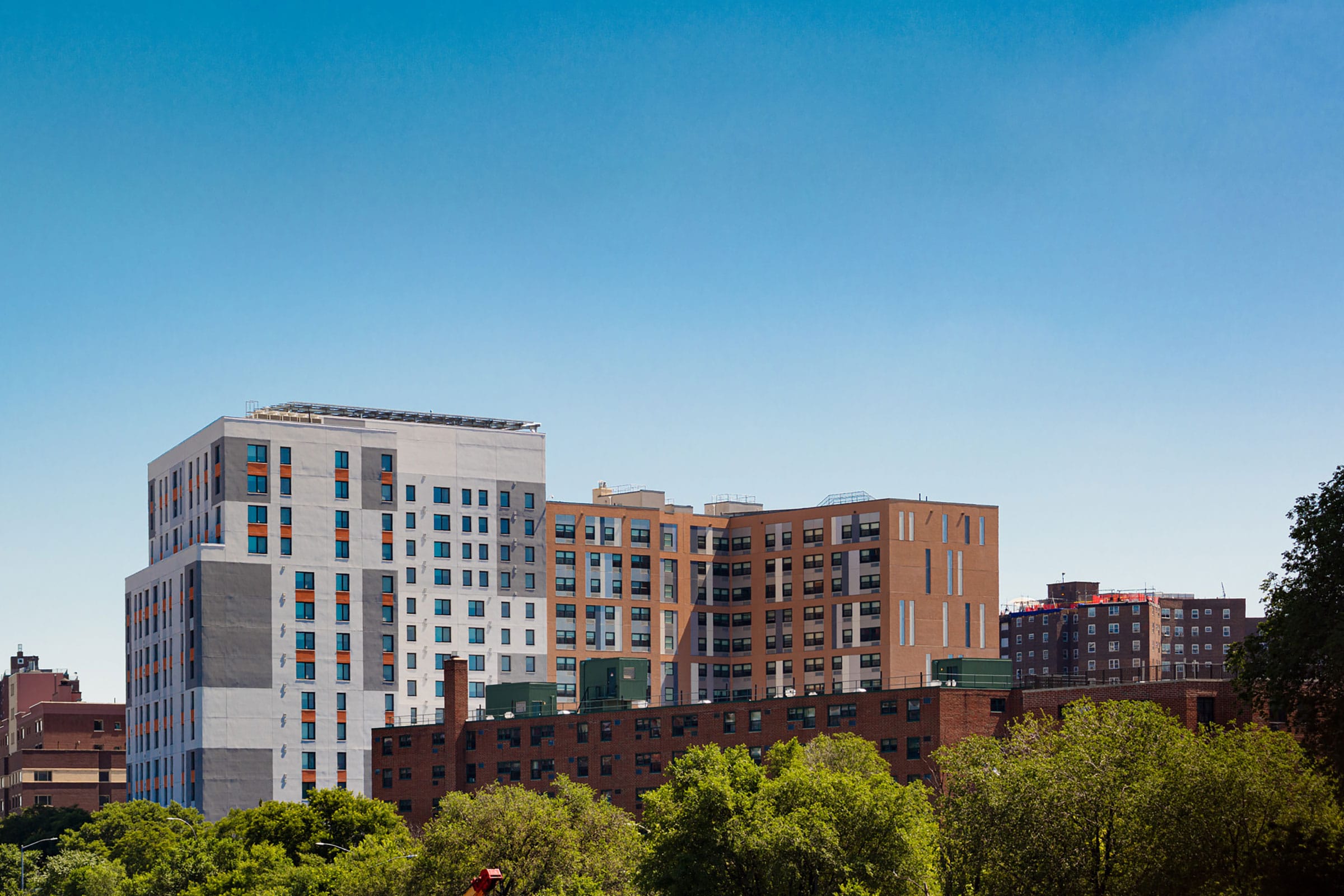
Green buildings like this apartment complex are integral to reducing the built environment’s impact on the natural world. Photo by John Bartlestone Photography
The built environment is responsible for producing approximately 42% of the world’s annual carbon emissions, but it also accounts for approximately 36% of all global energy usage, while the construction and demolition industry as a whole generates 30% of all solid waste and extracts 32% of Earth’s natural resources.
This has led to a growing interest in sustainable architecture—or the design of buildings that seeks to minimize any negative impact on the environment through the use of green building practices like energy-efficiency measures, renewable energy, and using low-carbon materials.
6. Regenerative Architecture

Construction for the MAC Lodge minimized the impact on the neighboring trees. Photo by Chad Holder
Green building can be taken a step further by adopting principles of regenerative architecture. From an ecological perspective “regenerative” refers to the ability of an ecosystem—that is, the land itself and all of its living and non-living inhabitants—to recover and replenish from ecological harm.
Regenerative architecture, on the other hand, refers to a specific methodology or philosophy that views the built environment as an extension of the natural environment and seeks to construct buildings with a positive impact on their respective ecological communities. Rather than simply reduce their consumption of energy or resources, regenerative buildings actively give back more than they take by mimicking the restorative biological systems found in nature.
7. Passive Design
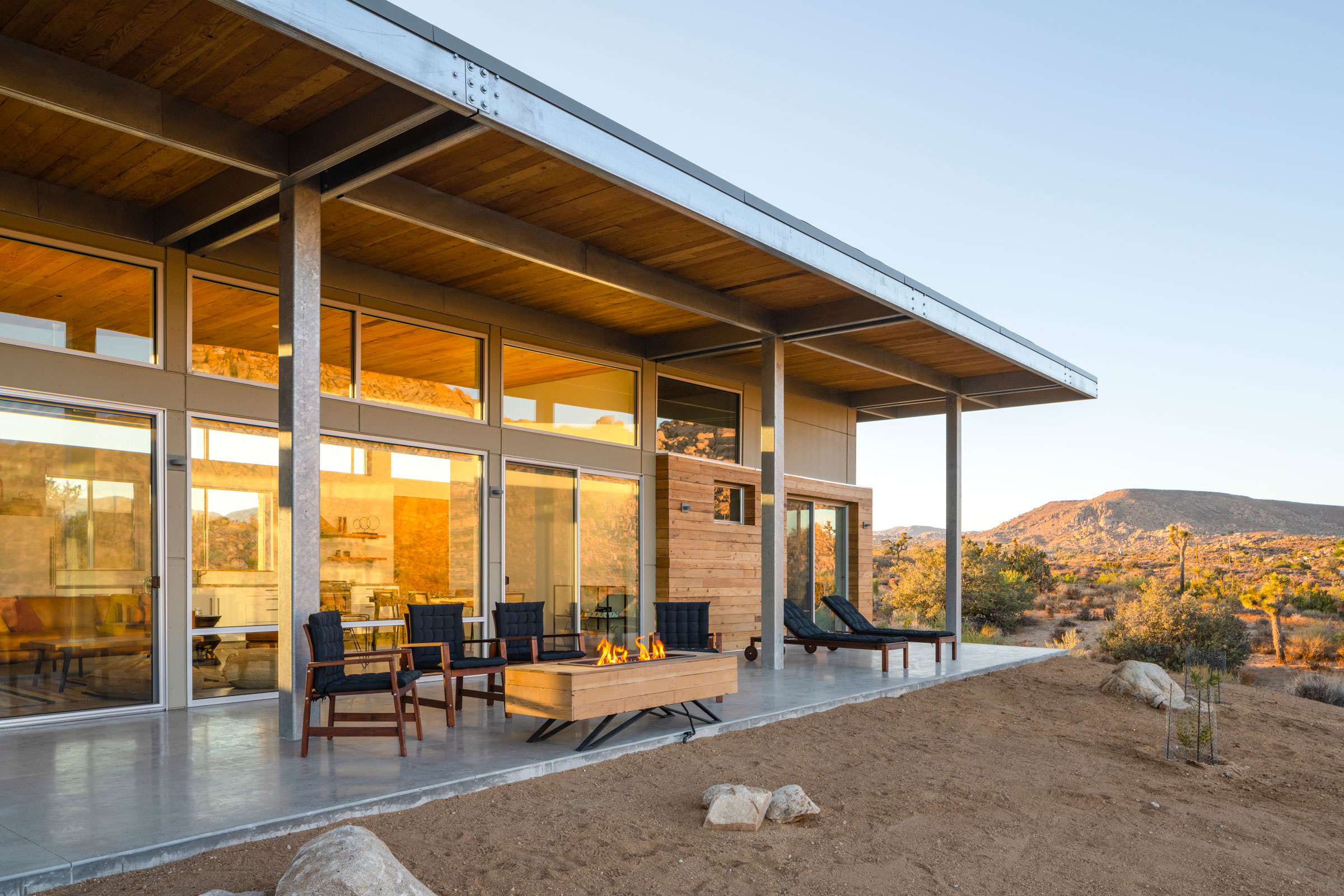
Designed by Jeremy Levine, the Cowboy Modern Desert Eco-Retreat uses passive solar design and wind-driven ventilation to reduce energy needs. Photo courtesy of Lance Gerber
In architecture passive design refers to those design strategies that allow buildings to make the most efficient use of natural environmental factors—e.g. wind, buoyancy, and sunlight—to reduce energy consumption. Rather than rely on mechanical systems for heating, cooling, lighting, and ventilation, passive design enables a building to depend solely on the laws of nature to fulfill these crucial functions.
Three of the most common passive design strategies are passive solar, passive ventilation, and passive lighting:
- Passive Solar Design. Design in which a building’s walls, floors, and windows are made to reject solar heat during the summer and collect, store, reflect, and redistribute solar heat during the winter; informs everything from building orientation and window placement to the materials used in construction.
- Passive Ventilation. Refers to the process of supplying air to and removing air from an indoor space via the pressure/density differences arising from either wind or buoyancy; informs window placement and building layout.
- Passive Lighting. Refers to the use of windows, skylights, and other daylighting elements to illuminate a building’s interior without having to rely on artificial lighting.
8. Water Conservation

Low-flow appliances like this Niagara toilet can drastically reduce water use. Photo courtesy of Niagara
Fresh water is, without a doubt, the most important natural resource on the planet—one all living beings require for survival. As it stands, a large percentage of freshwater ecosystems are threatened as a result of human activities.
“More than one-third of available and renewable freshwater on Earth is consumed for agriculture, industrial, and domestic uses, often leading to water source contamination and endangering public health,” Anna Zakrisson, cofounder and chief science officer of iimpcoll, previously wrote for gb&dPRO.
Water conservation strategies include installing low-flow taps and water-efficient or waterless appliances, greywater recycling, required water-use reporting, the construction of desalination plants, and more.
9. Waterway & Beach Cleanups

Regular waterway and beach cleanups help keep aquatic animals safe. Photo by Chris Howe
Waterway and beach cleanups are crucial in preventing waste—especially plastic waste—from polluting our streams, rivers, ponds, lakes, and oceans. Defined as the process of removing microplastics, debris, waste, and pollutants from bodies of water, waterway cleanups may be conducted at both the micro and macro level.
Small-scale waterway cleanups typically entail wading through or walking alongside bodies of water and manually removing large debris as they are encountered, whereas large-scale waterway cleanups often involve the use of specialized commercial equipment to skim and collect waste actively floating at sea.
When conducted regularly and effectively, waterway cleanups help protect aquatic life by preventing toxic algal blooms and deoxygenation; support fishing and other seafood industries by improving water quality and restoring fish populations; and ultimately reduce the risks of contaminated drinking water.
10. Rainwater Harvesting
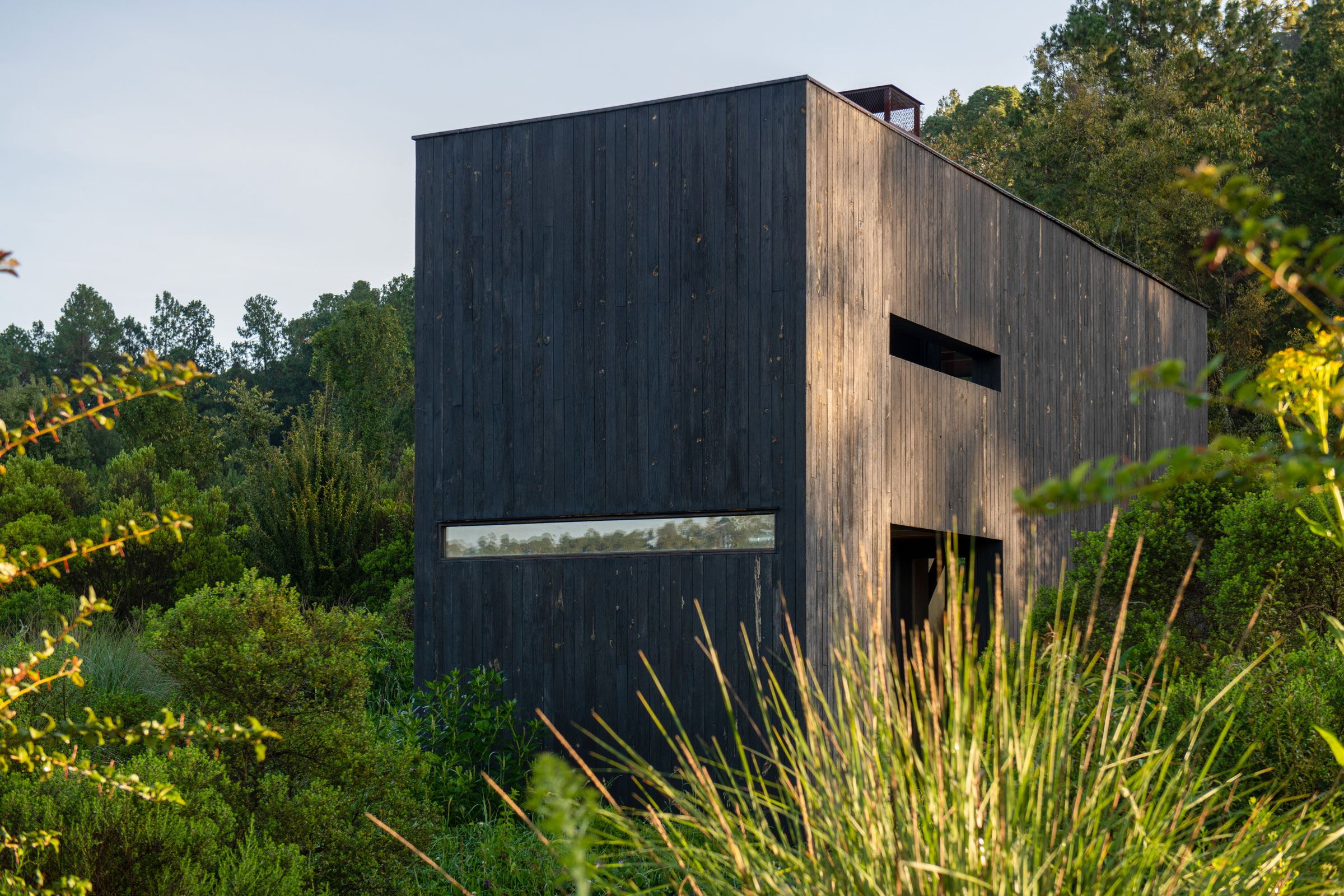
The Rain Harvest Home project is made up of three buildings that each collect rainwater to integrate with an above- and below-ground reservoir system. Photo by Jaime Navarro
Harvesting rainwater, or collecting precipitation to store for later use, is another way to conserve water. Rainwater harvesting has become increasingly popular in recent years because of its role in boosting a building or community’s water security.
There are both simple and complex rainwater harvesting systems. Depending on the rainwater’s intended use the collected water may be used as is—typically the case if it’s for landscape irrigation—or it may go through a treatment/purification process so it may be used for plumbing or as an alternative source of potable water.
Not only does rainwater harvesting increase a building’s overall water security, it also helps control and reduce stormwater runoff, which in turn decreases the chances of sewer system overflow and urban flooding. During times of drought stored rainwater can help reduce strain on underground aquifers and the municipal water supply while also minimizing the need for imported water.
11. Sustainable Forest Management
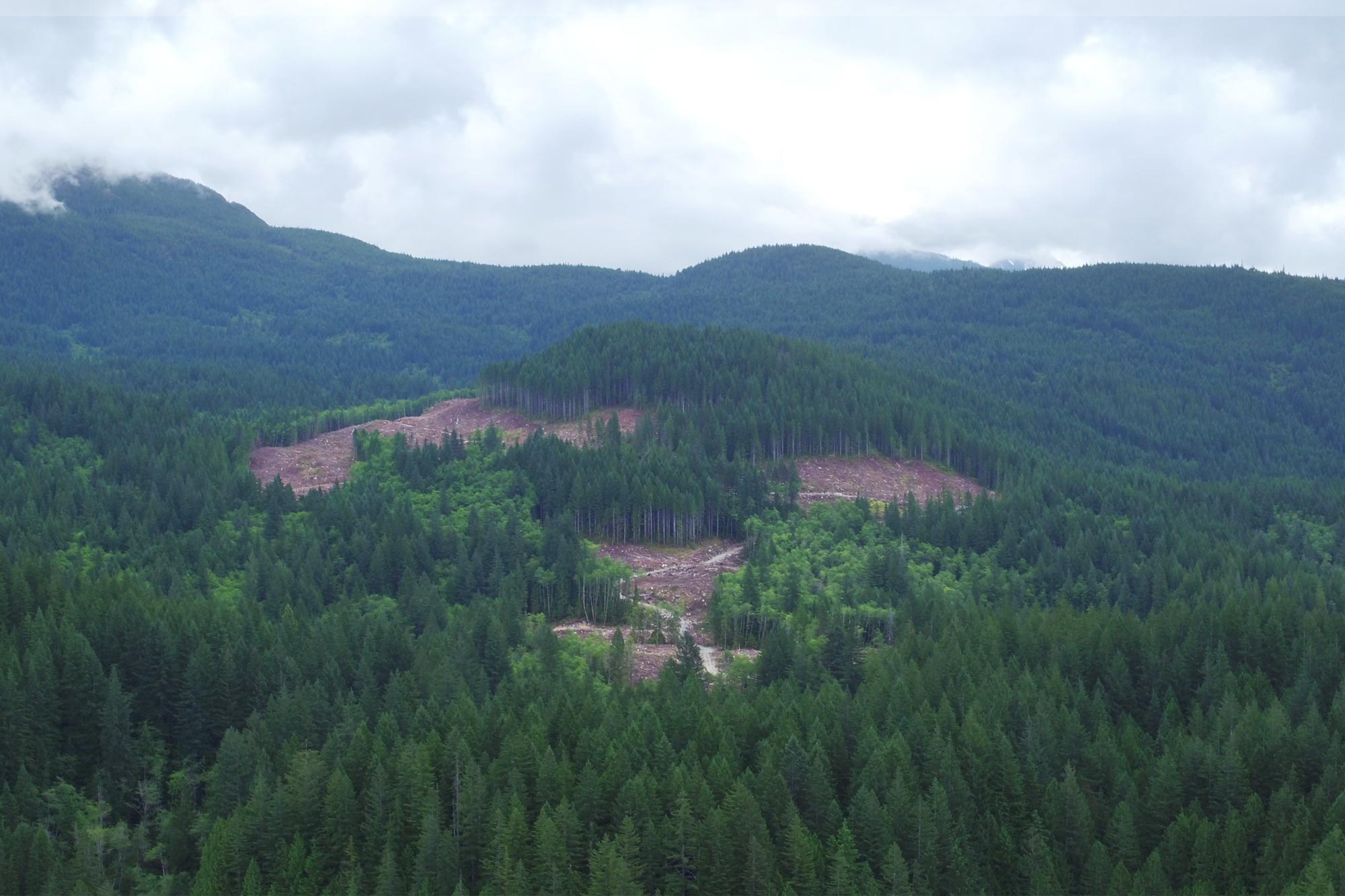
“There is no better, more natural choice than wood when sourced from regions of the world like British Columbia, who ensure those forests will continue to grow in perpetuity,” says Shannon Janzen, vice president partnerships, sustainability and chief forester at Western Forest Products. Photo courtesy of Western Forest Products
Each year approximately 10 million hectares or 15 billion trees are cut down each year as lumber or to make room for development projects. This rate of deforestation is, to put it simply, not sustainable for the long term and contributes significantly to the decline of biodiversity and the traditional cultural practices of many Indigenous peoples.
Many governments and forest managers have adopted sustainable forestry practices that aim to manage and improve the overall diversity, resilience, and productivity of forest ecosystems.
Common sustainable forest management practices include:
- Protecting ecologically important forest areas.
- Prohibiting logging companies from cutting down old growth trees.
- Disallowing the approval of forest conversion projects.
- Prohibiting the use of chemical pesticides and planting of genetically modified trees.
- Replanting native tree species after harvesting.
- Practicing selective logging and thinning rather than clearcutting.
- Ensuring free, prior, and informed consent of Indigenous peoples.
12. Soil Conservation

This waterfront restoration project headed by Surfacedesign required the reintroduction of crucial, nutrient-rich soil profiles local to the Puget Sound. Photo by Marion Brenner
Soil conservation and management is also integral to ensuring present and future generations are capable of meeting their needs. As a living ecosystem and the basis for which all food production is quite literally rooted in, soil is as critical a resource as freshwater but is rarely treated as such.
Soil conservation efforts have ramped up in recent years, focused on preventing the loss of crucial topsoil and staving off or reversing soil infertility caused by overuse, salinization, acidification, or other contamination.
Some of the most common soil conservation techniques include planting cover crops, rotating crops after each harvest, practicing conservation tillage, use of planted windbreaks, and reintroduction of organic matter/microorganisms.
13. Drought-Tolerant Landscaping
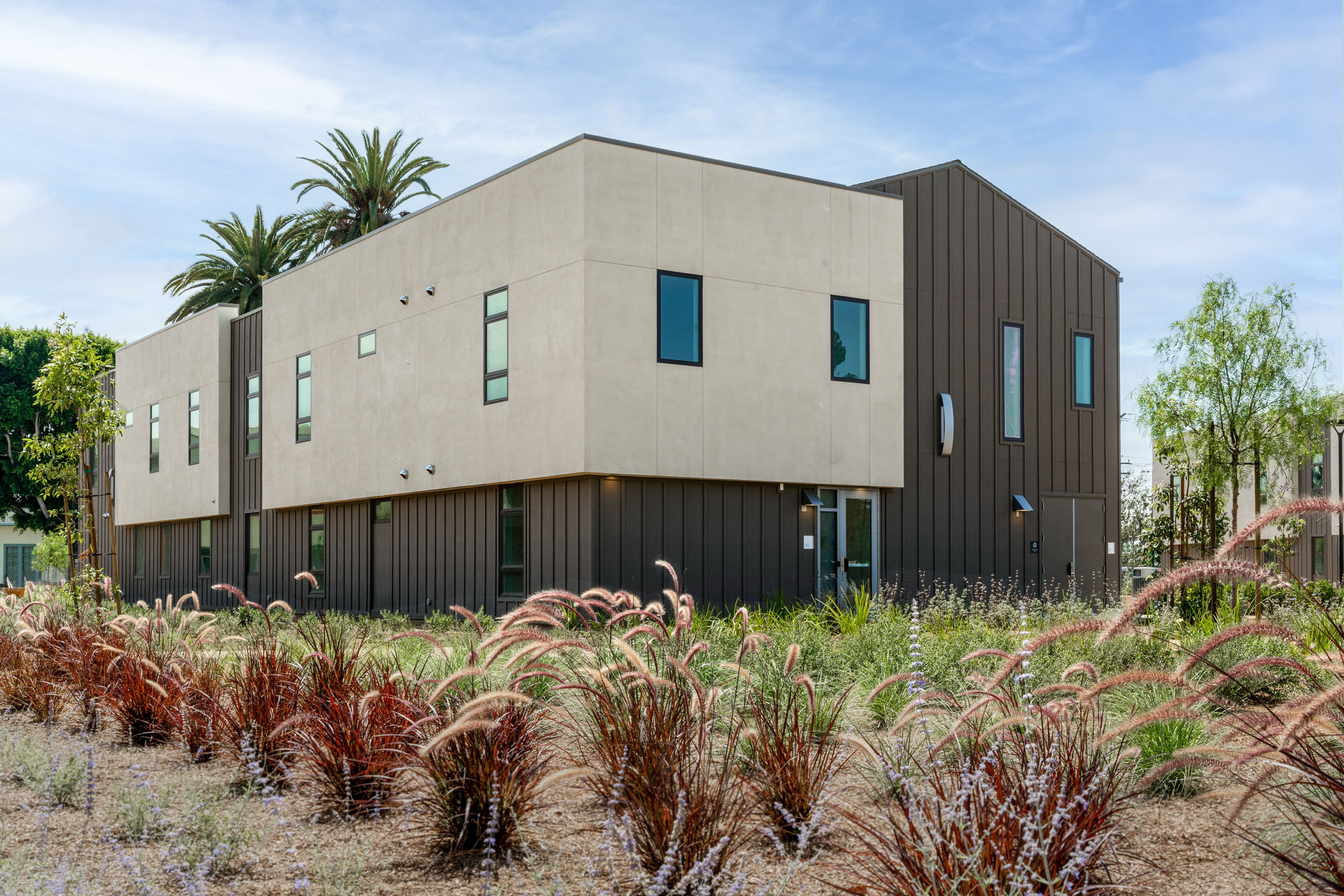
The 6.8-acre campus is designed around the landscape, and the drought tolerant native plants help to restore the natural habitat. Photo by Ric Berryman
In the US an average of 9 billion gallons of water is used per day for residential landscape irrigation. Most of that water goes towards watering lawns, many of which serve a purely aesthetic purpose and are actively harmful to existing biodiversity. A significant amount of water can be saved, however, through the implementation of drought tolerant landscaping or the practice of landscaping with native plant species that possess a high tolerance to drought and drought-like conditions.
Once established drought tolerant landscapes are capable of reducing outdoor water use by as much as 75%, which in turn translates to lower water bills and reduced strain on municipal water systems.
Sustainable, water-wise landscaping initiatives also go hand in hand with promoting and maintaining soil health, as drought-tolerant plants form long, complex root systems that improve the surrounding soil’s resistance to erosion caused by wind and water, preventing the loss of crucial topsoil.
14. Reintroduction of Biodiversity

Green roofs seeded with native plant species can help reintroduce biodiversity in urban areas. Photo courtesy of Architek / Brett Ryan Studios
Experts estimate that the accelerated species loss we are currently experiencing is happening at a rate between 1,000 and 10,000 times higher than the natural extinction rate. This rapid loss of biodiversity is largely the result of human actions—namely deforestation, overdevelopment, and pollution.
Many groups, organizations, and programs are working to reintroduce biodiversity to damaged environments using the following common methodologies:
- Planting trees and seeding meadows. Reintroducing native tree species and seeding meadows with indigenous grasses, flowers, and other plants can help attract and provide habitats for a variety of mammals, birds, and insects; this can even be accomplished in suburban and urban areas by way of green roofs and living walls.
- Building wildlife corridors. The proliferation of cultivated land, roadways, and large urban centers has drastically reduced the ability of many species to migrate safely; constructing wildlife corridors—or strips of natural habitats connecting ecosystems otherwise separated by human development—over and under roads can help reconnect habitats and encourage species migration.
- Reconstructing coral reefs. Coral reefs are some of the most threatened ecosystems on the planet, with estimates suggesting that half of all reefs have already been destroyed or severely damaged; coral reef reconstruction efforts entail growing, gardening, and out-planting coral species as well as the direct transplanting of coral fragments.
15. Sustainable Agriculture

Photo courtesy of Il Borro
While large-scale agriculture is generally considered necessary to produce the food required to feed Earth’s growing population, most experts agree that the current practices—monocultures, slash-and-burn, use of chemical pesticides, etc.—behind modern industrial farming aren’t sustainable for the long term.
This has prompted the creation of—and return to—sustainable agriculture strategies designed to preserve soil health, reduce pollution, and conserve water, amongst other things. Some of the most common sustainable agriculture practices include:
- Crop rotation. Instead of growing the same crop in the same field for years on end, farmers rotate their crops between different fields after each growing season; this helps reintroduce nutrients into the soil that may have been depleted after the last crop and reduces the chances of developing resistant weeds and pests.
- Organic farming. Sometimes referred to as biological farming, organic farming refers to the practice of using fertilizers and pest control measures of organic rather than synthetic origin.
- Agroforestry. Refers to the practice of growing trees and shrubs alongside or amongst crops and pastureland; agroforestry can help reduce erosion, improve water retention, increase biodiversity, and provide protection from wind.
- Permaculture. Describes an approach to land management and food production that aims to mimic the arrangement of plants observed in natural environments to ensure harmonious, mutually-beneficial cross-species interaction; emphasizes ethical production and consumption that benefits the earth, people, and local communities.
16. Urban Agriculture

Photo by Monica Løvdahl
Rural farms are integral to sustainable food production but the long-distance transportation of produce and animal products to cities and urban centers can contribute significantly to atmospheric air pollution. Urban agriculture projects can help cut down on transportation-related emissions by allowing produce to be grown locally while also serving to increase food security, foster community building, provide learning opportunities, improve air quality, and mitigate stormwater runoff.
Losæter is an urban farm, park, and museum in Oslo that is an example of urban agriculture in action. Originally established as an art project, Losæter is now home to fields seeded with rescued ancient grains, vegetable garden plots, a public baking house, and common area that doubles as a knowledge-sharing space for everything baking and farming related
“This place makes it possible for a lot of people to be creative,” Anne Beate Hovind, a previous project manager for Losæter, previously told gb&d. “It started out one way, and today we have a city farmer here, we have a public bakehouse, we have a baker who wants to do workshops. A lot of people are involved now.”
17. Food-Waste Reduction
Approximately one-third of all food produced for human consumption is wasted each year, amounting to roughly 1.3 billion tons annually according to data collected by the World Food Programme. In the US food waste accounts for 24.1% of all municipal waste sent to landfills.
At the agricultural level a large portion of edible food is thrown out due to overproduction or failure to meet cosmetic standards; a significant amount of produce is never even harvested but left to rot in the field simply because it does not meet market size, shape, color, or maturity standards. It’s estimated that roughly 20% of produce harvested is wasted as a result of improper storage, packaging, or transportation.
Allowing individuals and organizations to collect and redistribute produce that does not meet cosmetic quality standards can help reduce food waste at harvest, though it would be even more beneficial to relax cosmetic standards altogether.
Many grocery stores, bakeries, and restaurants also contribute to food waste by overproducing or overstocking and then throwing away, despite food still being edible. Some businesses do donate unsold food to food banks—an action that, if practiced nationwide, could drastically reduce food waste.
18. Eco-Tourism
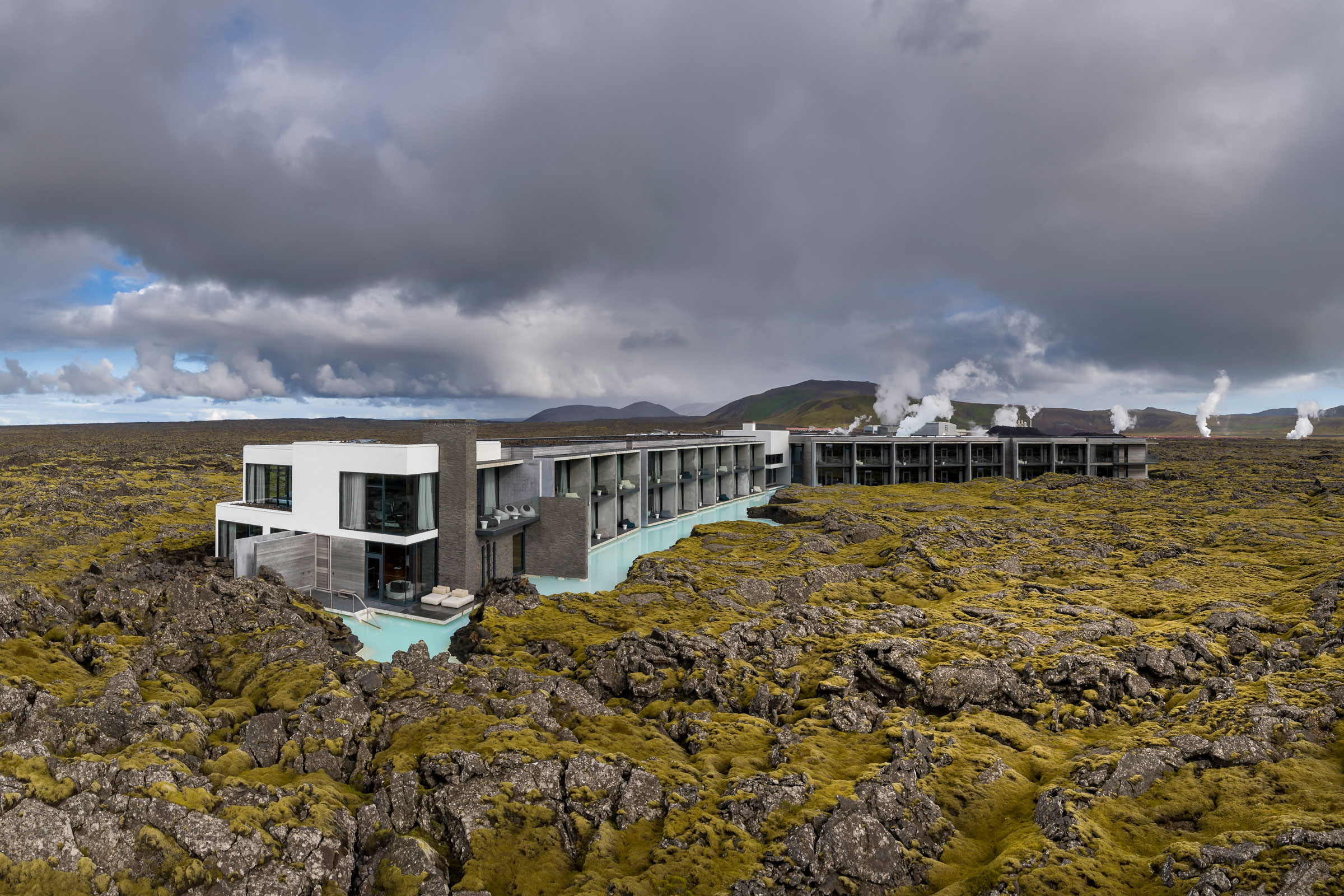
The Blue Lagoon is an otherworldly spa heated by a geothermal energy plant, and it’s many tourists’ first stop in Iceland. Basalt Architects, a leader in green building in Iceland, completed The Retreat at Blue Lagoon in 2018. Photo by Ragnar Th. Sigurdsson
Approximately 11% of the world’s GHG emissions and 4 to 8% of all global waste is produced by the tourist industry, according to estimates by the World Travel & Tourism Council—and that’s to say nothing of the cultural harm tourism has historically perpetuated against certain communities and identity groups around the world.
Eco-tourism seeks to end and even reverse the harm caused by the mass tourism industry by amplifying conservation efforts and encouraging ethical cultural interaction. Marketed as tourism that prioritizes responsible travel, eco-tourism aims to educate people about the natural world, fund environmental preservation initiatives, support economic development, and improve the well-being of local communities.
While not foolproof, adopting and implementing sustainable tourism initiatives can help improve the tourist industry as a whole and ensure tourism is conducted in a more ethical manner—that is, it minimizes environmental, socio-economic, and cultural harm as much as possible.
19. Heat-Island Mitigation

Westcoat offers both solar reflective waterproofing and concrete coating systems. These systems help combat the urban heat island effect by lowering surface temperatures. Here, MACoat Solar Reflective was installed on a Carmel Valley deck. Photo courtesy of Westcoat
Rising global temperatures, combined with the propensity of urban areas to experience higher average temperatures than rural areas—the so-called “heat-island effect”—puts nearly 41 million people in the US alone at increased risk of fatal heat stroke.
In order to prepare for this increasingly dangerous phenomena, many cities have begun integrating heat-island mitigation into their development plans, including measures such as:
- Cool infrastructure. Light-colored and solar reflective coatings applied to rooftops, sidewalks, and roads allows for a substantial amount of solar heat energy to be reflected rather than absorbed.
- Green roofs. Act as insulators by absorbing solar energy and can be as much as 30 to 40% cooler than conventional rooftops; when implemented to scale, green roofs can help lower city-wide temperatures by approximately 5% via evapotranspiration.
- Trees and green spaces. Similar to green roofs, the expansion of green spaces and the planting of trees contribute to evaporative cooling and provide shade for pedestrians.
20. Pedestrian Infrastructure & Walkability

Multiple urban portals at the Gensler-designed Arizona Center were created to direct pedestrian circulation toward the project’s central core and encourage impromptu social gatherings. With the new open entries, walkability increased dramatically. Dramatically patterned perforated metal screens integrate with existing facades. Photo by Bill Timmerman
For the last few decades cities and other urban centers have been designed around the automobile, largely at the expense of walkability. This has led to the transportation sector accounting for approximately 29% of all carbon emissions in the United States, with light-duty passenger vehicles responsible for over half of that figure.
In an effort to reduce these emissions more and more urban planners, developers, architects, and engineers have begun designing with walkability in mind. “The most sustainable cities are truly resilient and include design for walkability, allowing people to get around on two feet with easy access to key business and cultural hubs without putting their health at risk,” Renee Schoonbeek, senior consultant stations and urban development at Arcadis, wrote in a previous gb&d article.
Encouraging walkability by prioritizing pedestrian infrastructure—such as wide sidewalks, wayfinding tools, trails and footpaths, bike lanes, and crosswalks—over car-centric infrastructure reduces vehicle dependency to get around, resulting in fewer emissions and higher air quality.
21. Expanding Public Transportation

The Harrison Path Train Station in Harrison, New Jersey leverages YKK AP subsidiary Erie AP’s ENVIRO|FACADES unitized curtain wall. Photo courtesy of YKK AP
In a similar vein, increasing access to affordable, high-quality public transportation systems can help reduce carbon emissions even further by providing safe, reliable, and sustainable alternatives to personal automobiles. The logic here is simple: buses, trains, subways, and other transit systems are capable of carrying far more people than a personal vehicle can while also producing fewer emissions per person.
This is especially true for cities and countries that invest in public transportation that runs wholly or partially off of renewable energy. Japan, for example, is widely regarded as having one of the best public transportation networks in the world, largely thanks to the country’s investment in electric high-speed rail systems that are fast, reliable, and incredibly low-polluting.
22. Affordable & Sustainable Housing

Photo by Bruce Damonte
Sustainable housing refers to the subcategory of sustainable architecture concerned with the development of green, affordable housing projects and encompasses everything from private single-family residences to high-rise apartment complexes. These housing projects are intentionally designed, built, and operated in such a manner so as to reduce the structure’s environmental impact, promote social equity, and uplift social stability without contributing to gentrification.
Housing that utilizes renewable energy and energy-saving measures, for example, can help reduce renters’ utility bills and decrease reliance on potentially unreliable or overtaxed local energy grids, thereby improving energy security and improving community resilience.
We see this exemplified in Edwin M. Lee Apartments, a residential complex designed by Leddy Maytum Stacy Architects (LMSA) that serves as the first combined homeless veteran and low-income family development in San Francisco.
“The Edwin M. Lee Apartments has set a new standard for community-forward, equitable design,” Gwen Fuertes, architect and building scientist for LMSA, previously wrote for gb&d. “The integrated design creates a healthy, energy-efficient, resilient, and regenerative complex that provides social, economic, and environmental value to the residents and the greater community.”
23. Accessible Health Care
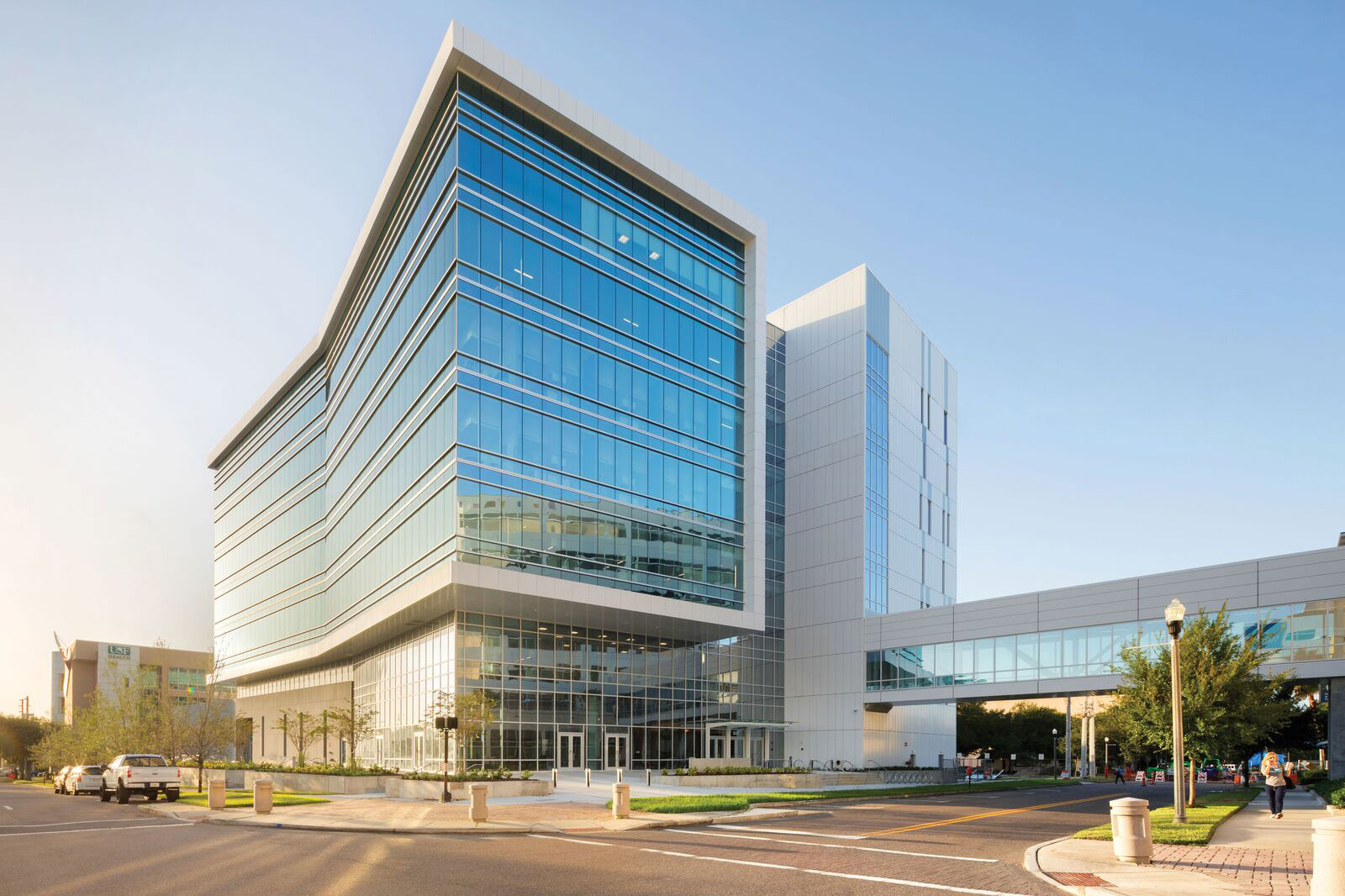
John’s Hopkins All Children’s Hospital in St. Petersburg, Florida, using YKK AP 50H. Photo courtesy of YKK AP
While the majority of these examples deal with environmental sustainability, it’s important to recognize those concerned with promoting social sustainability as well—and ensuring everyone has access to affordable, quality health care regardless of their financial standing is crucial to promoting social sustainability. This also entails addressing and reducing the historic health care disparities based on race, ethnicity, gender, geographic location, and disability status.
By making essential services like health care accessible to all community members we in turn create a healthier society for both current and future generations.
24. Poverty Alleviation
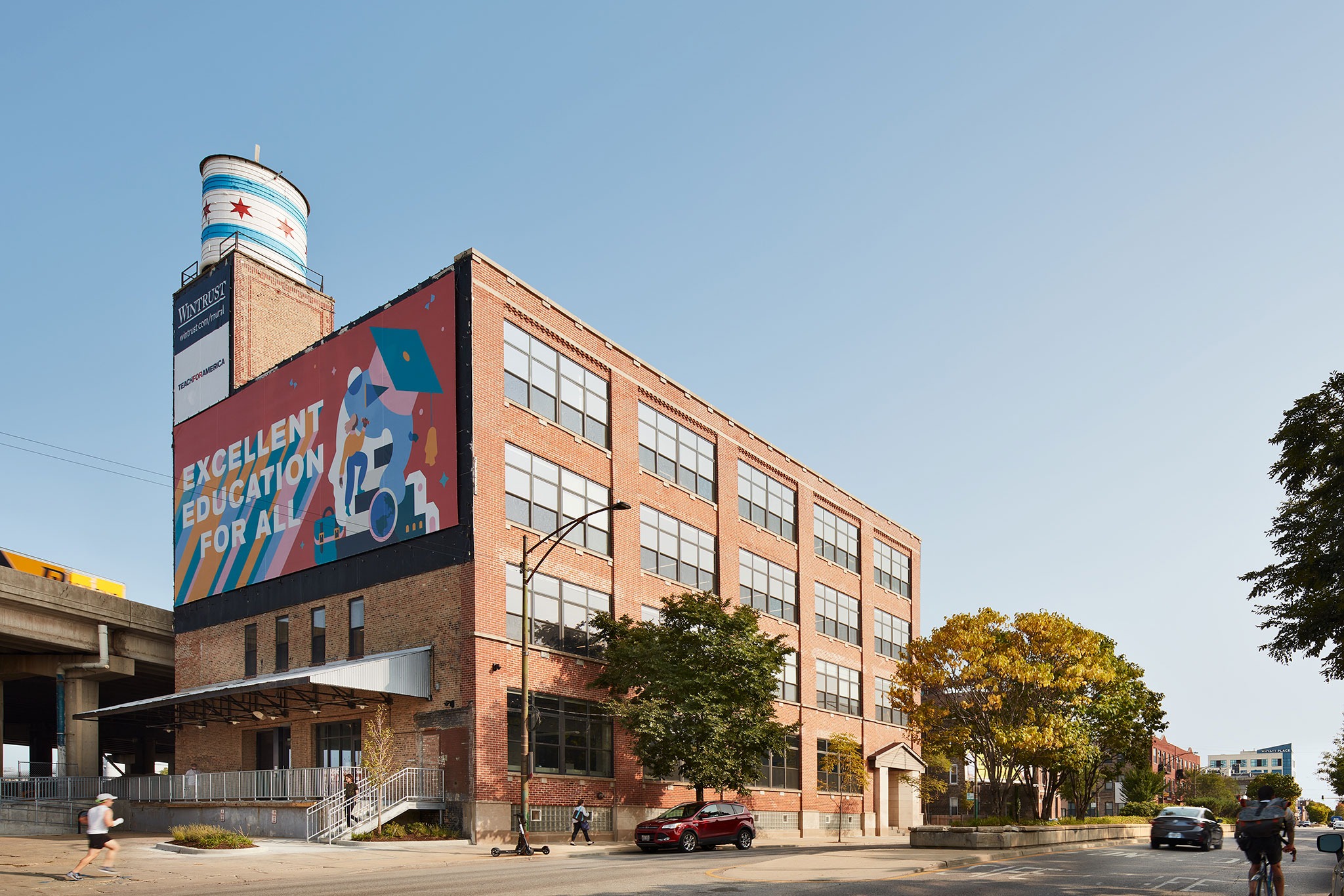
Wheeler Kearns Architects designed The Night Ministry in Chicago, renovating three floors of a former manufacturing facility in the Bucktown neighborhood. Photo by Kendall McCaugherty, Hall + Merrick Photographers
While it may be more appropriate to consider poverty alleviation as a stepping stone towards sustainable development rather than a true example of social sustainability, poverty alleviation programs nevertheless play an important role in the quest to create healthy, resilient, and equitable communities.
Organizations like The Night Ministry in Chicago, for example, help foster social sustainability by providing overnight shelter, warm meals, housing support, and health care services to those experiencing poverty and homelessness in the greater Chicago area.
25. Disaster Risk Management
Disaster risk reduction or management describes the systematic approach to identifying, assessing, and minimizing the risks of various environmental, climate, and social disasters. Disaster risk reduction efforts are designed so as to reduce socio-economic vulnerabilities to these disasters and prevent future disasters by addressing the factors that trigger them.
Disaster risk management strategies often manifest in the form of resilient infrastructure, educational programs, poverty alleviation campaigns, improving healthcare accessibility, and even the relocation of vulnerable populations.

